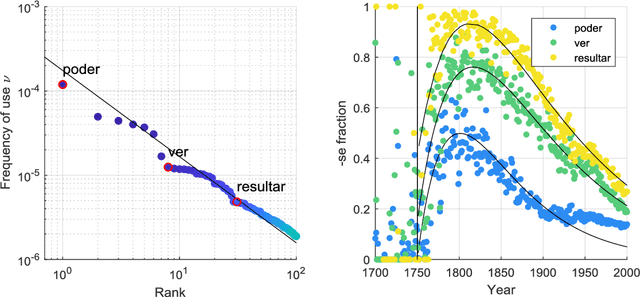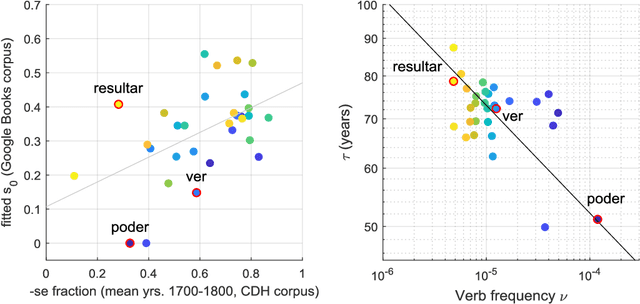Fading of collective attention shapes the evolution of linguistic variants
Paper and Code
Nov 29, 2018

Language change involves the competition between alternative linguistic forms (1). Notably, the Spanish past subjunctive comes in two perfectly equivalent variants ended in -ra or -se (2); for instance, in the sentence 'If I were there', the verb can be equally translated to estuviera or estuviese. During a first spontaneous process that began in the Middle Ages, the form -ra migrated from the indicative to the subjunctive, displacing the original -se form (3-5). A second period started with the creation of the Royal Spanish Academy in 1713, which produced a global standardization process that enforced the official spelling of -ra and -se as perfectly interchangeable variants (6). Time series extracted from a massive corpus of books (7) show that this standardization produced a boost in the declining old form -se that eventually faded, leaving -ra as the dominant one in the present time. The time series were successfully fitted by a low dimensional model that integrates two basic collective behaviors: an imitative component, and a fading of collective attention to the institutional regulation. We show that the natural scale over which collective attention fades is inversely proportional to the frequency of use of the verbs.
 Add to Chrome
Add to Chrome Add to Firefox
Add to Firefox Add to Edge
Add to Edge